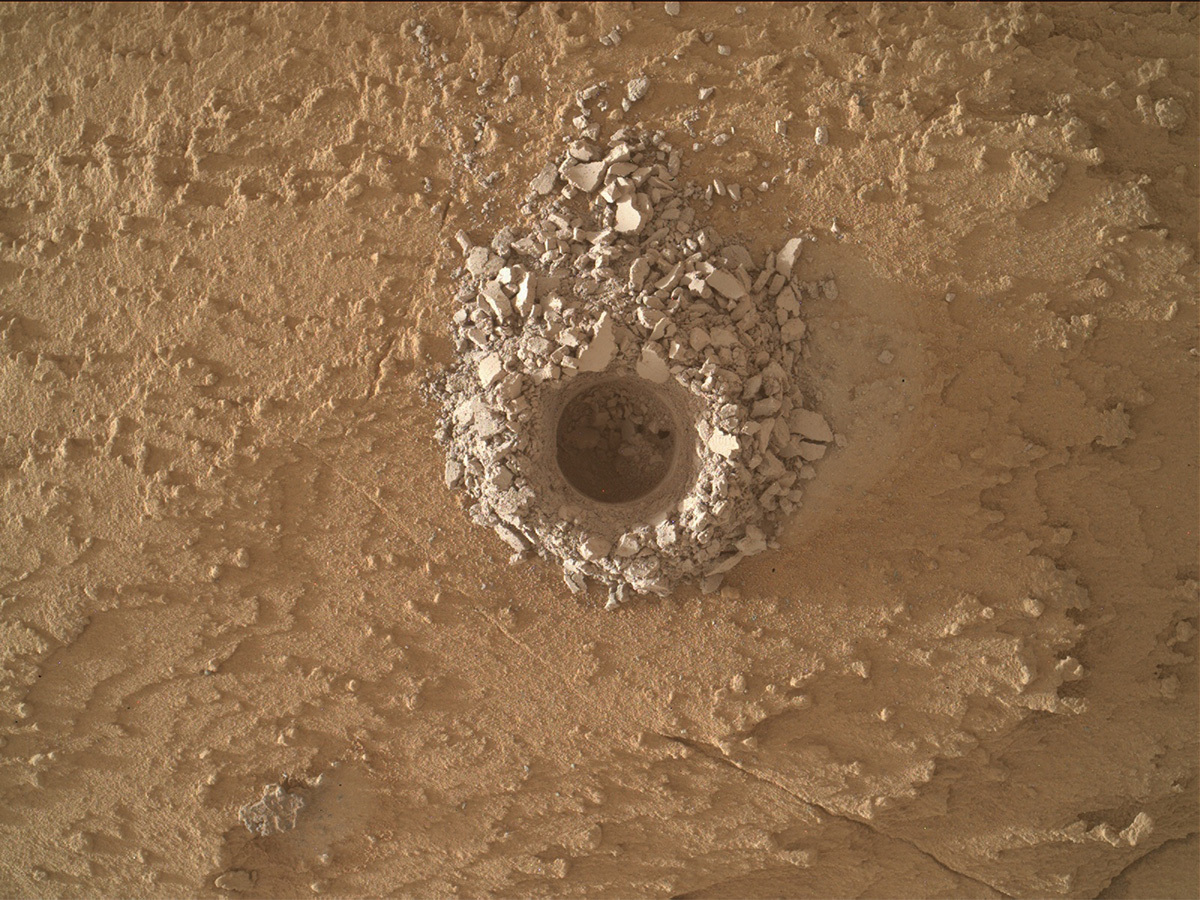3 min read

Earth planning date: Monday, May 22, 2023
Curiosity successfully wrapped up the “Ubajara” drill campaign over the weekend with some imaging of the drill tailings. This Monday, we are planning two sols (Mars days) of activities to finish up at Ubajara before driving off in the coming sols. Most targeted science today is focused on bedrock target “Apetina,” which is situated on the same block as our previous Ubajara drill target.
We start off with Navcam and Mastcam line-of-sight observations to assess the dust content in the atmosphere. ChemCam will use its laser to ablate and analyze soil target “Salamangone” with a technique called laser-induced breakdown spectroscopy (LIBS). ChemCam will also acquire a series of images with its Remote Micro-Imager to form a mosaic of upper Gediz Vallis ridge from a distance.
Curiosity will use its Dust Removal Tool (DRT) to first brush away the ever-present Martian dust coating Apetina, so other instruments can get a better look at the composition and features of the actual underlying bedrock. Mastcam will take lots of images after brushing the target to determine and document the success of the dust removal. Then, MAHLI will have a look at the brushed target, and APXS will analyze the elemental composition of Apetina with a combination of X-rays and alpha particles in the evening. Today was my first solo shift as the APXS Payload Uplink/Downlink Lead, so as operations wrap up, I’m eagerly awaiting the arrival of our APXS data from Apetina! Later, after the Sun has set on Mars, MAHLI will have a second look at Apetina – this time at night with LEDs rather than sunlight to illuminate the surface. As the original MAHLI PI once explained, “MAHLI’s white light illumination capabilities will be used to create glints, reduce shadows, create shadows, and thereby enhance observation of crystal faces.”
The second sol of our plan is full of observations of nearby bedrock, the distant crater rim, and the Martian atmosphere. Mastcam kicks things off on the second sol with some more imaging of Apetina and an extension of its mosaic of the local terrain surrounding Curiosity. ChemCam will then use the LIBS technique once more to investigate the surface of nearby bedrock target “Zipaquira” and investigate potential signs of past alteration. ChemCam’s last observation of this plan will be a mosaic looking toward “Peace Vallis,” located along the distant rim of Gale crater. Curiosity will also investigate the Martian atmosphere with a Mastcam Sky Survey and Navcam Dust Devil Survey.
Written by Abigail Knight, Graduate Student at Washington University in St. Louis







